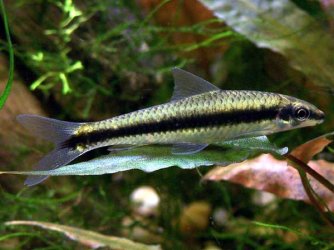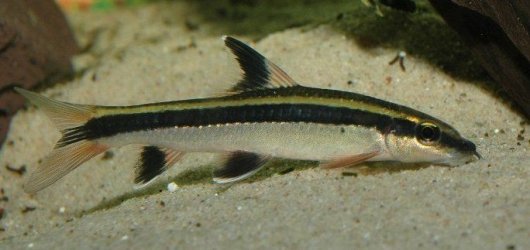it has been a long time since I kept SAE. But I seem to recall that at that point in time their Latin name was "Crossocheilus siamensis." Clearly this has been changed. I know that species get reclassified sometimes. Was it considered an invalid name? My first attempt to get them resulted in Flying Fox instead (thank-you AZ Gardens). My second attempt got me these:

I seem to recall a rather in depths article from back then which explained the differences in appearance betwwen the SAE, Fox and CAE. The one thing I do know is the ones above ate all sorts of algae. If I stopped feeding the tank they would even eat BBA. That is the reason for the above picture. I had two algae outbeaks in my high tech planted tan., One was caused because I did not use teflon tap all the connections on the CO3 system and a 5 lb. bottle emptied in about 10 days. The second was caused then one of the 4 power compacts bulbs over the tank burned out and I did not have a replacement on the shelf. I took me a week to get a new one delivered. Since then I have kept spare bulbs for everything.
If you look really hard you can make out some of the BBA on the dwarf hair grass. The SAE above and a few more were moved from another tank into this one to take care of the BBA.





